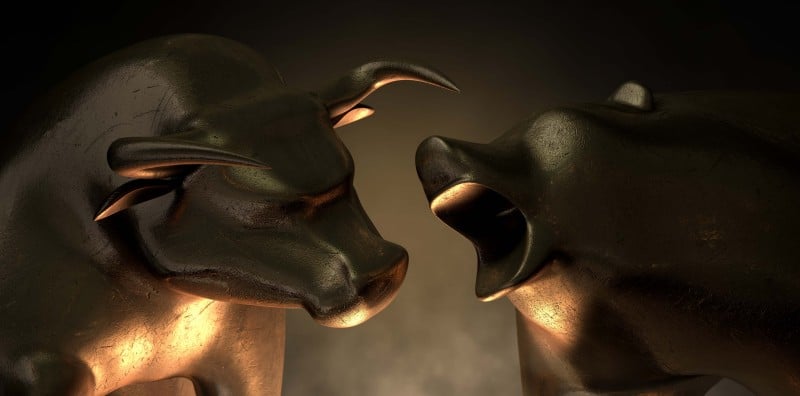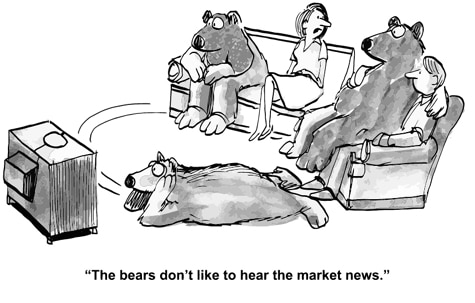
Why “Bear and Bull” Market
Theory 1: Attack Method
Bulls attack by lowering its head and using its horns to thrust its rival up in the air. In that way, a bull market comes out of a lowered market and then rapidly increases or climbs.
Conversely, bears attack by using its strength in downward force on its rival. So a bear market goes lower in the same way a bear attacks by pushing downward.
One of the reasons traders love Forex is the ability to profit in a bull and bear market. Read article.
Theory 2: Bearskin Jobbers and Baiting

But then where did the term bull come from?
The Elizabethan era of 1558–1603 popularized the blood sports of bear and bull “baiting”. People flocked to the arenas to sit back and watch as either a bull or a bear would be chained down and attacked by a pack of dogs. This theory gives the idea that bulls and bears were introduced as opposites.
Trading can be considered a figurative blood bath if you are not careful, which is why we always encourage that you use strong risk management and be careful not to over-leverage your account. Read full article.
Theory 3: Bare Bulletin Board
The London Stock Exchange was born at the turn of the 17th century. At its earliest times, there was a bulletin board traders use to post offers to buy stocks. When there was a high demand for stocks, the board was full of BULLetins referred to as “bulls”. When demand for stocks was low, the board was “bare” or “bear.”






Leave a Reply
You must be logged in to post a comment.